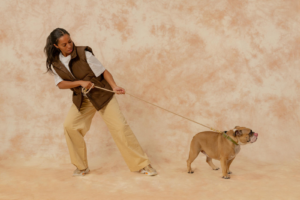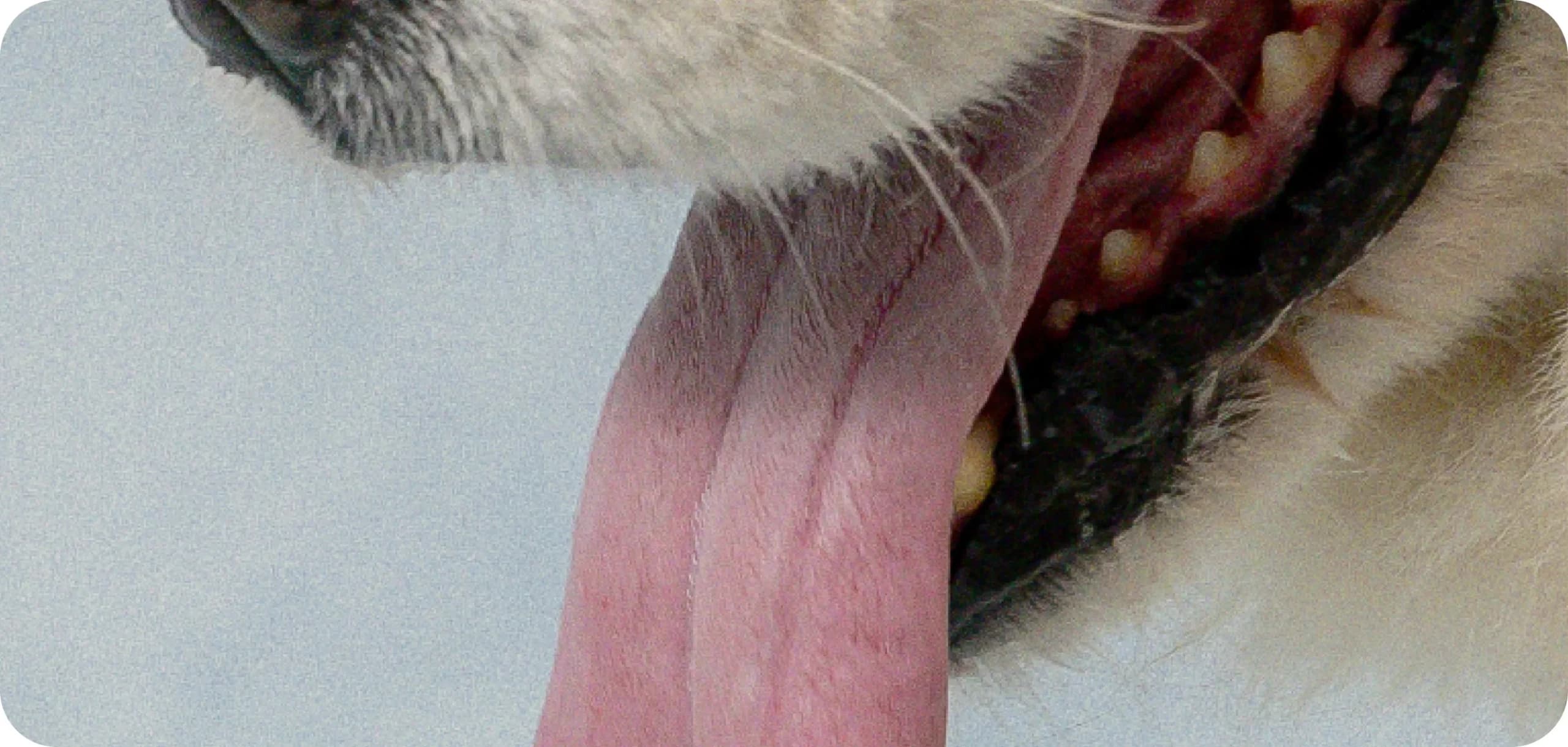If you’ve ever been dragged down the street by your dog, you’re not alone. Dogs pulling on the lead is a common issue that turns what should be a relaxing walk into a frustrating experience.
But why do dogs pull on the lead? And what can we do to make those walks more enjoyable? Let’s dive into the solutions for why dogs pull on the lead and explore practical solutions for better, stress-free walks.
Why Do Dogs Pull on the Lead?
Imagine this: you clip on your dog’s lead, step outside, and before you even take a breath, they’re lunging, yanking you along like a sledgedog in a race. Sounds familiar?

So, why does your dog pull on the lead? Your dog might be pulling for one of the following reasons:
- Excitement: This is the most common reason for pulling on a lead. Dogs are eager to explore new smells, sights, and sounds. For them, pulling is the fastest way to reach those interesting things.
- Reinforcement of pulling: Each time a dog pulls and you move forward, even a little, it teaches them that pulling works.
- Opposition Reflex: When a dog feels resistance from the lead, it instinctively pulls back harder一it’s natural reaction to pressure.
- Lack of training: Many dogs haven’t been taught how to walk nicely by your side, so pulling becomes a default behaviour.
- Anxiety or fear: Some dogs pull because they feel anxious or scared and want to move away from something that worries them or get closer to something that feels safe.
Understanding these reasons can help you address the issue and enjoy stress-free walks with your canine companion.
Why It’s Important to Lead the Walk
Here’s the thing: if your dog keeps pulling on the lead, they’re leading the walk. That means they’re in charge, which might sound harmless but can lead to bigger problems. When your dog is in front, they decide the direction, pace, and who they want to greet. It can make them more reactive to other dogs, people, or unexpected events一like that pesky squirrel darting across the street.

Taking control of the walk is essential. It helps keep your dog safe by teaching them to focus on you, not the distractions around them. It also reinforces your role as the leader, which builds trust and makes your dog feel secure.
How to Communicate Through the Lead
Your lead is more than just a piece of equipment—it’s a tool for communication. If you’ve ever felt like your dog doesn’t even know you’re at the other end of the lead, you’re not alone! Here are solutions for getting your dog to stop pulling on the lead, using it as a tool to communicate clearly:
- Maintain a short, relaxed lead: Imagine trying to steer a car with a loose, floppy steering wheel; that’s what a long, tight lead does. A short but relaxed lead gives you better control and makes guiding your dog without tension easier.
- Practise the ‘Heel’ command: Teach your dog to walk closely to your side using the “heel” command. This command helps them understand where they should be, keeping them focussed on you rather than distractions. Be sure to head to our app for the step-by-step instructions.
- Stop when they pull: It might seem counterintuitive, but stopping every time your dog pulls sends a clear message. You’re showing them that pulling leads to no progress, helping them learn that staying by your side is the way to move forward.
By practising these techniques, you’ll create a clearer line of communication with your dog through the lead.
Where to Start With Lead Training
Getting your dog to stop pulling on the lead doesn’t happen overnight, but you can get there with a little patience. Start with the basics in a quiet environment:

- Practice indoors first: Begin lead training in a distraction-free zone, like your living room. Walk short distances with treats in hand, rewarding your dog when it stays by your side. It’s a bit like dancing—you’re both learning the steps!
- Gradually introduce distractions: Once your dog is doing well indoors, take it outside. Start in your backyard or a quiet street, then slowly work up to busier areas. Patience is key—rushing will only lead to frustration for both of you.
- Stay calm: Before stepping outside, ensure you and your dog are calm. If your dog is too excited, take a moment to wait until they settle. Staying calm from the start will help set the tone for a relaxed and controlled walk.
These steps set the foundation for good lead manners and more enjoyable walkies.
Quick Solutions for Better Walks
Three things that improve walkies with your dog are equipment, rewards, and body language. Here’s what we mean by solutions for dogs pulling on lead:
- Choose the right equipment: A front-clip harness can give you more control without causing discomfort. Avoid retractable leads, which will encourage pulling and make it harder to manage your dog.
- Reward the behaviour you want: Keep treats handy to reward your dog whenever they walk calmly by your side. Positive reinforcement is your best friend in teaching lead manners! Use your dog’s food drive to enhance the effectiveness of your training.
- Observe your dog’s body language: Is your dog’s tail wagging happily, or are they showing signs of stress like panting or looking away? Learning to read these signals can help you understand when to take breaks or call it a day.
Need More Help? Check Out Our App!
Need more guidance on how to stop your dog from pulling on the lead? Download our app for free and dive into the lesson library where you can start off with basic commands helping to asses on what level your dog’s knowledge is and slowly move on to our Advanced Obedience and Problem Solving programs. We offer step-by-step exercises, video tutorials, and tips to help you and your dog enjoy every walk!

The Bottom Line for Dogs Pulling on Lead
Turning a chaotic walk into a calm, enjoyable experience takes time, but it’s worth every step. Remember, the goal is to make walks fun and rewarding for you and your dog. Celebrate the small wins, stay patient, and enjoy those precious moments together!
For more tips and advice on dog training, visit our website or check out our app today.
Happy walking!

WEEKLY NEWSLETTER
Lorem ipsum dolor sit amet consectetur. Viverra sed eleifend at nibh fermentum. Tortor imperdiet penatibus aliquam lorem pellentesque.



